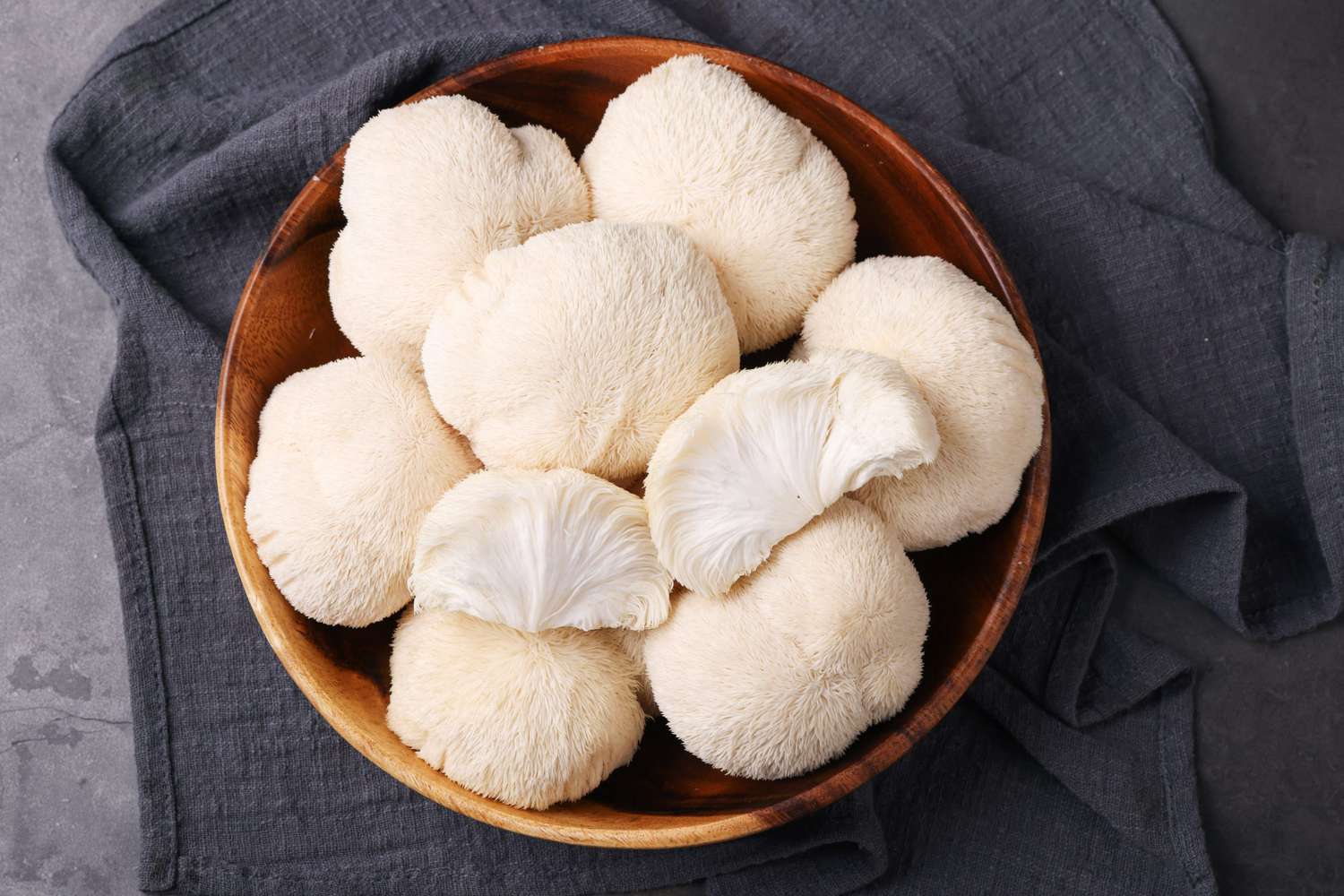
Lion's Mane
Lion’s mane mushrooms have a delicate, slightly sweet, and seafood-like flavor, often compared to crab or lobster when cooked. They are commonly sautéed, grilled, or used in stir-fries, pasta, or creamy sauces, and are also popular as a meat substitute due to their firm, shredded texture. Lion’s mane is rich in potassium, zinc, and small amounts of protein, along with B vitamins like thiamine and riboflavin. Its bioactive compounds, including hericenones and erinacines, are studied for their neuroprotective effects, promoting nerve growth, cognitive support, and anti-inflammatory benefits.
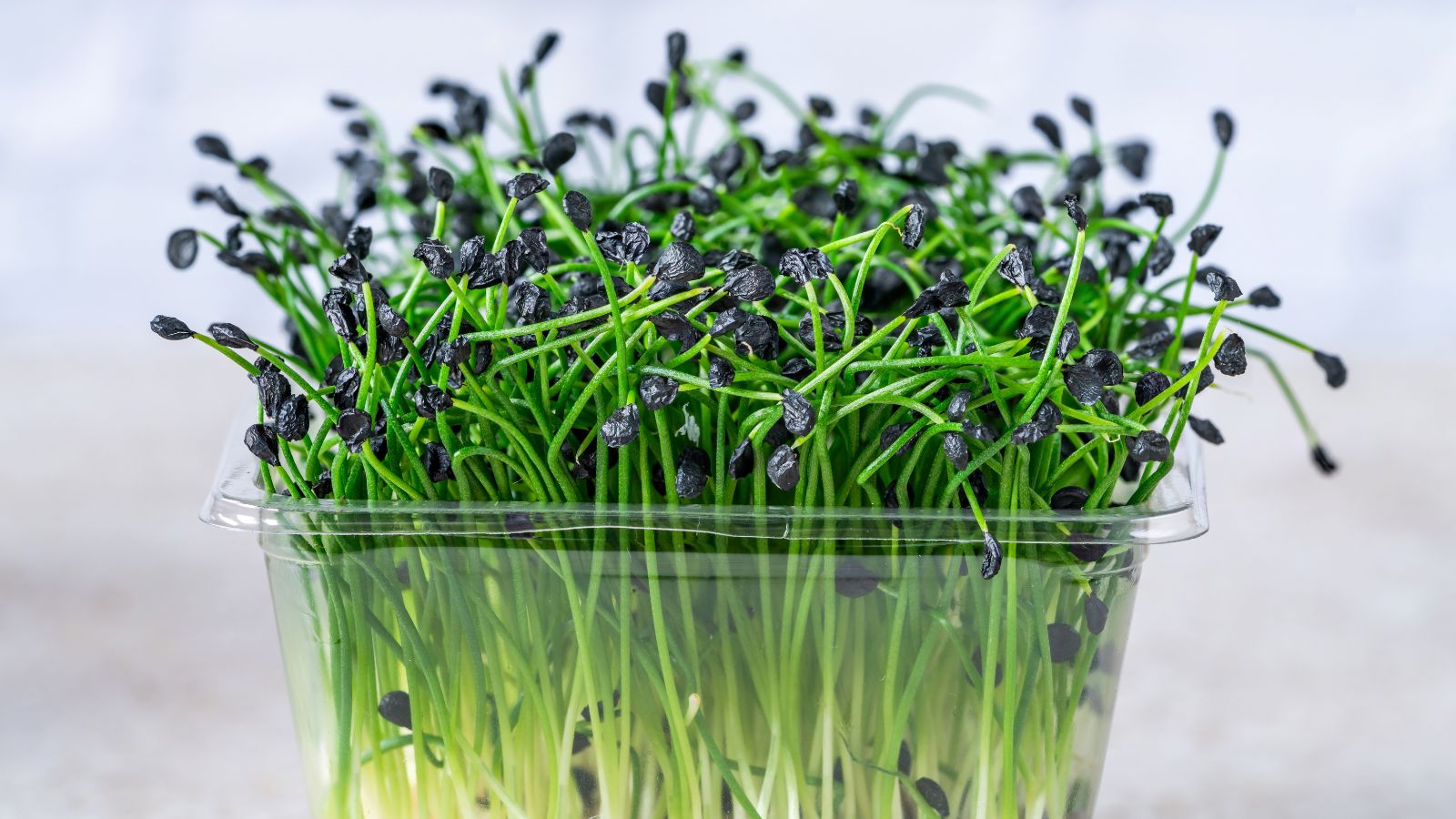
Chives
Chives have a mild, onion-like flavor with subtle hints of garlic, making them ideal for adding freshness without overpowering a dish. They are commonly used as a garnish for soups, salads, baked potatoes, eggs, and creamy sauces, and are often stirred in at the end of cooking to preserve their delicate taste. Chives are a source of vitamins A, C, and K, as well as minerals like calcium, magnesium, and potassium. Their bioactive compounds, including sulfur-containing allyl sulfides and flavonoids, are associated with antioxidant, antimicrobial, and potential cardiovascular benefits.
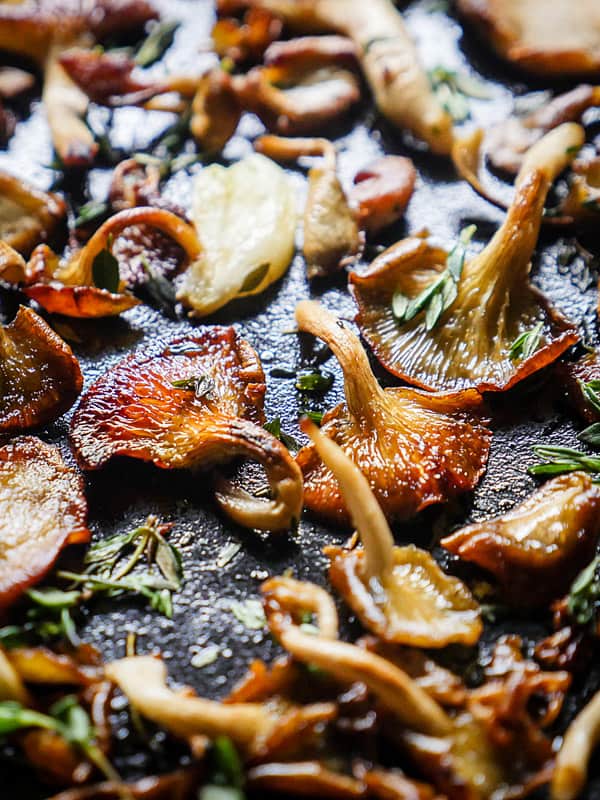
Oyster Mushrooms
Oyster mushrooms have a delicate, mild, and slightly sweet flavor with a hint of umami, often described as subtly seafood-like. In the kitchen, they are versatile and can be sautéed, roasted, grilled, or added to stir-fries, soups, pasta dishes, and risottos. Oyster mushrooms are a good source of B vitamins (especially niacin and riboflavin), as well as minerals like copper, potassium, and iron. Their bioactive compounds, including beta-glucans and ergothioneine, are known for antioxidant, immune-supporting, and cholesterol-lowering properties.
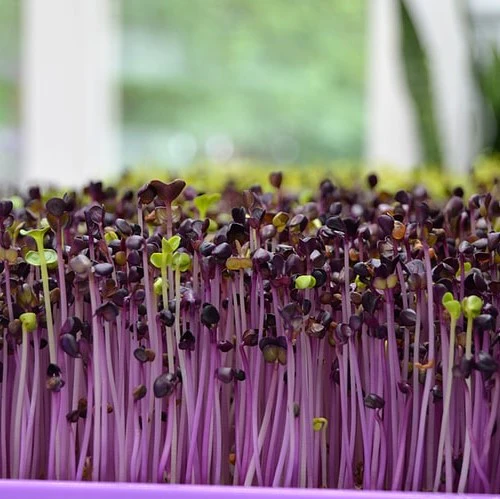
Purple Basil
Purple basil microgreens have a sweet, slightly spicy, and clove-like flavor with subtle hints of anise, offering a more intense taste than mature basil leaves. They are often used to add vibrant color and aroma to pasta, pizzas, salads, caprese dishes, pestos, and as a garnish for cocktails or desserts. These microgreens are rich in vitamins A, C, and K, as well as minerals like calcium, iron, and magnesium. Their bioactive compounds, including anthocyanins and essential oils like eugenol, provide strong antioxidant, antimicrobial, and anti-inflammatory effects.
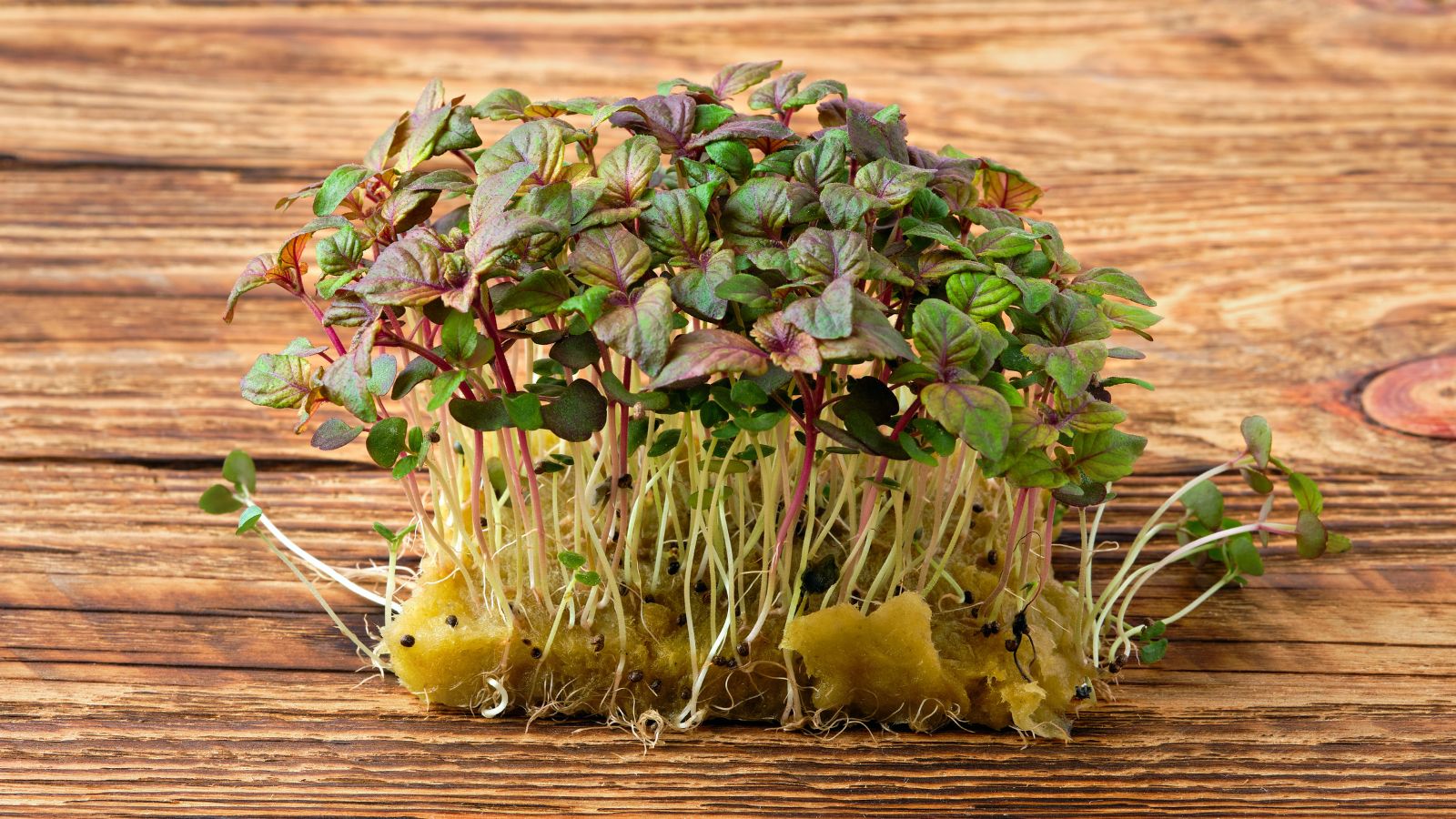
Shiso
Shiso microgreens have a unique flavor profile that combines hints of mint, basil, anise, and citrus, offering a refreshing and slightly spicy taste. They are commonly used in Japanese and fusion cuisines, adding depth to sushi, sashimi, salads, noodles, cocktails, and as a garnish for seafood or meat dishes. These microgreens are a good source of vitamins A, C, and K, along with minerals like calcium, potassium, and iron. Their bioactive compounds, including perillaldehyde and rosmarinic acid, are linked to antioxidant, anti-inflammatory, and potential anti-allergic properties.
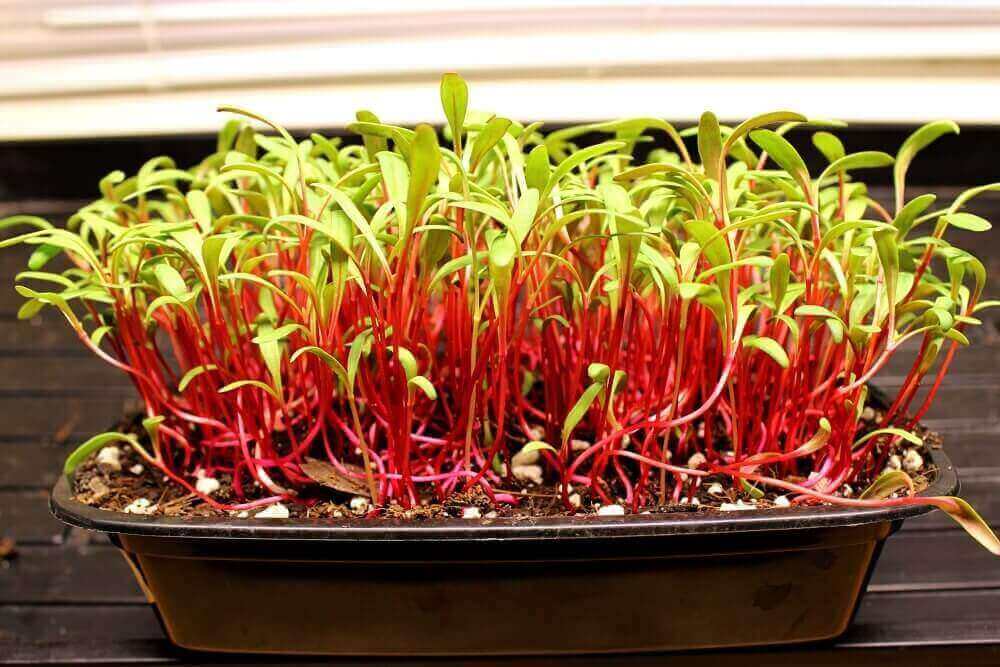
Swiss Chard
Swiss chard microgreens have a mild, earthy, and slightly beet-like flavor with a hint of sweetness, making them versatile in both raw and cooked dishes. They are commonly added to salads, wraps, smoothies, omelets, grain bowls, and used as a colorful garnish due to their vibrant red or yellow stems. These microgreens are rich in vitamins A, C, E, and K, along with minerals such as magnesium, potassium, and iron. Their bioactive compounds, including betalains and flavonoids, are known for antioxidant, anti-inflammatory, and potential liver-protective effects.
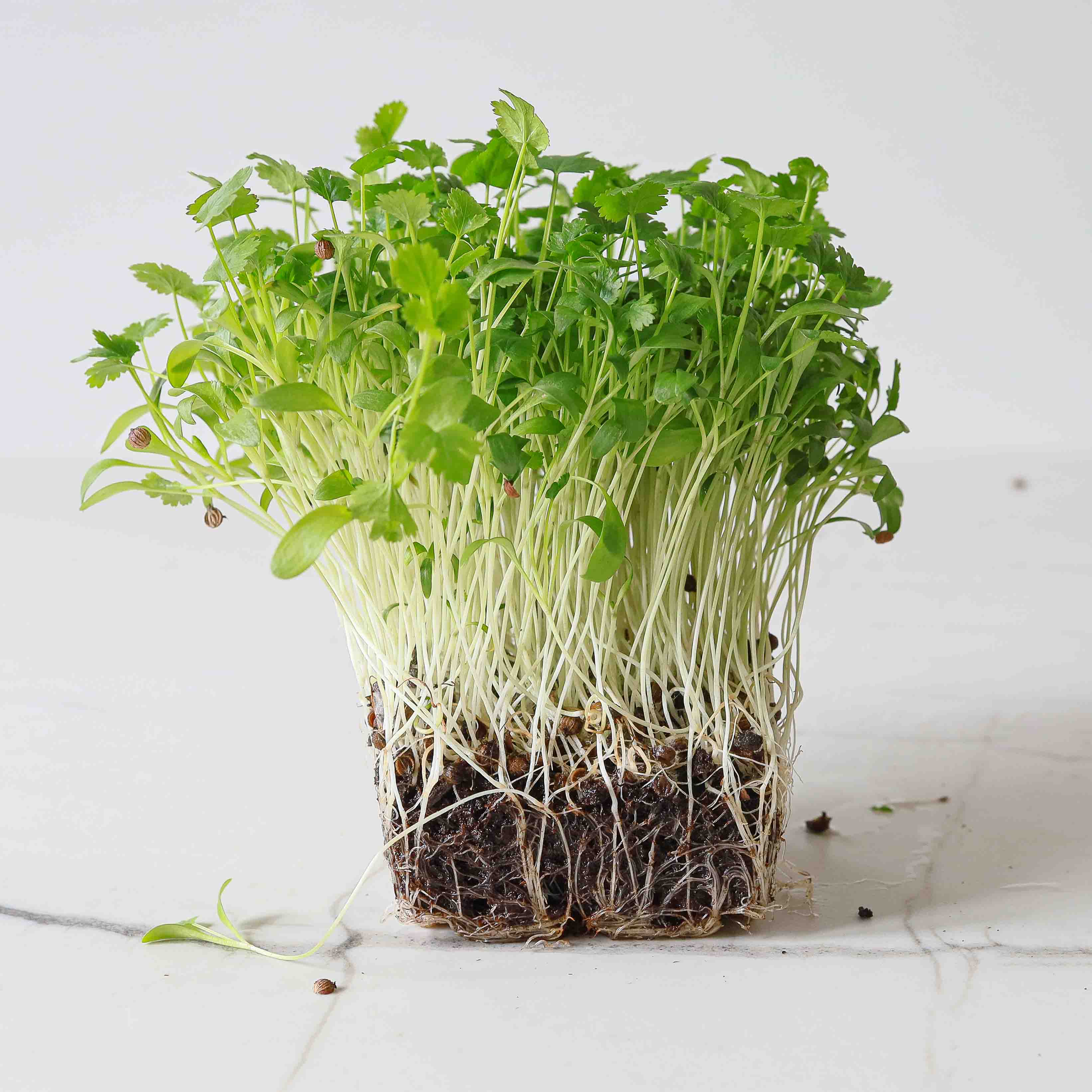
Cilantro
Cilantro microgreens have a bright, citrusy, and slightly peppery flavor that is more delicate and less pungent than mature cilantro leaves. They are commonly used to enhance tacos, curries, soups, grain bowls, and fresh salads, or as a garnish for seafood and Asian-inspired dishes. These microgreens are rich in vitamins A, C, K, and E, along with minerals like potassium, calcium, and iron. Their bioactive compounds, including linalool and various phenolics, are known for antioxidant, anti-inflammatory, and potential antimicrobial effects.
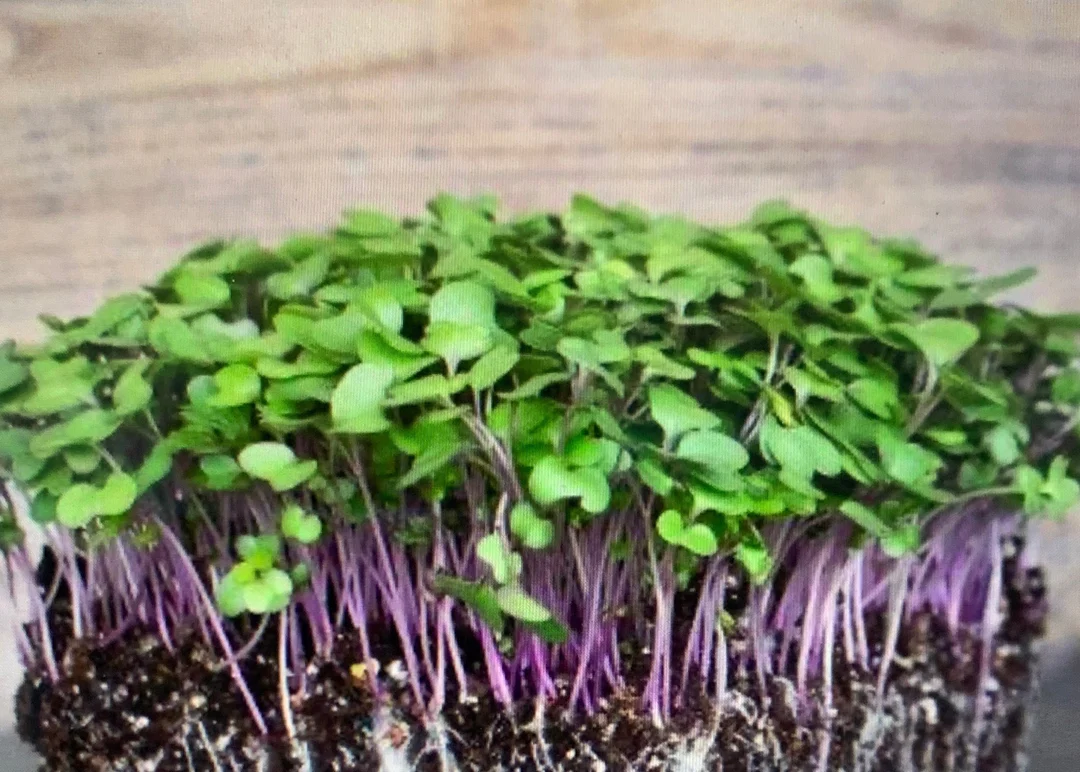
Kohlrabi
Kohlrabi microgreens have a crisp texture and a mild, slightly sweet flavor with subtle hints of cabbage and turnip, offering a fresh and delicate taste. They are commonly used to add crunch and a mild peppery note to salads, sandwiches, wraps, and as a garnish for soups and main dishes. These microgreens are rich in vitamins C, K, and A, as well as minerals like potassium, calcium, and magnesium. Their bioactive compounds, including glucosinolates and flavonoids, contribute to antioxidant activity, support detoxification, and may have anti-inflammatory and cancer-preventive properties.
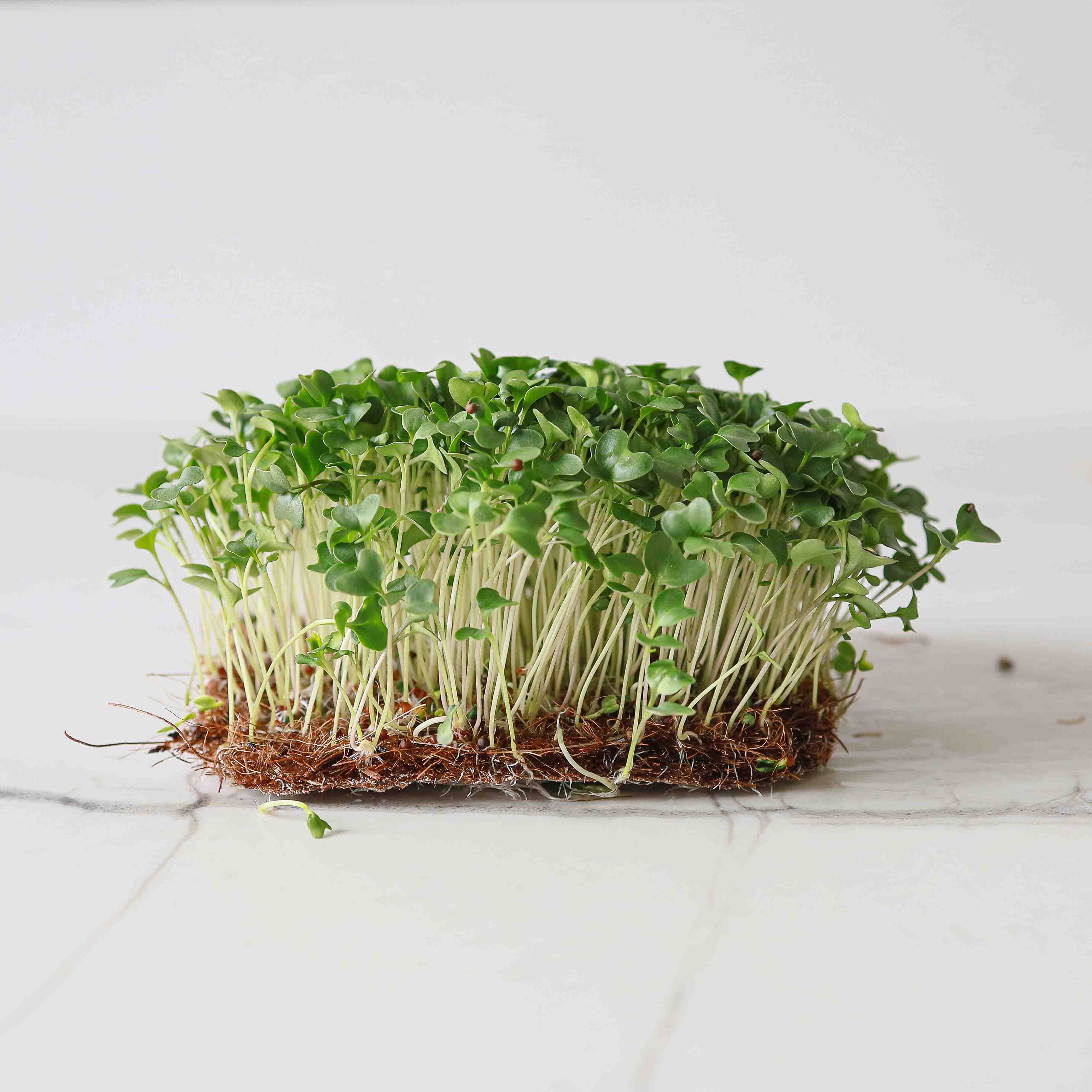
Broccoli
Broccoli microgreens have a fresh, mild, and slightly peppery flavor, with a hint of nuttiness that complements both raw and cooked dishes. They are frequently added to salads, wraps, smoothies, omelets, and grain bowls or used as a garnish to enhance both taste and visual appeal. These microgreens are rich in vitamins A, C, K, and E, as well as minerals like calcium, potassium, and magnesium. They are particularly noted for their high concentration of sulforaphane, a bioactive compound linked to powerful antioxidant activity, detoxification support, and potential anti-cancer properties.
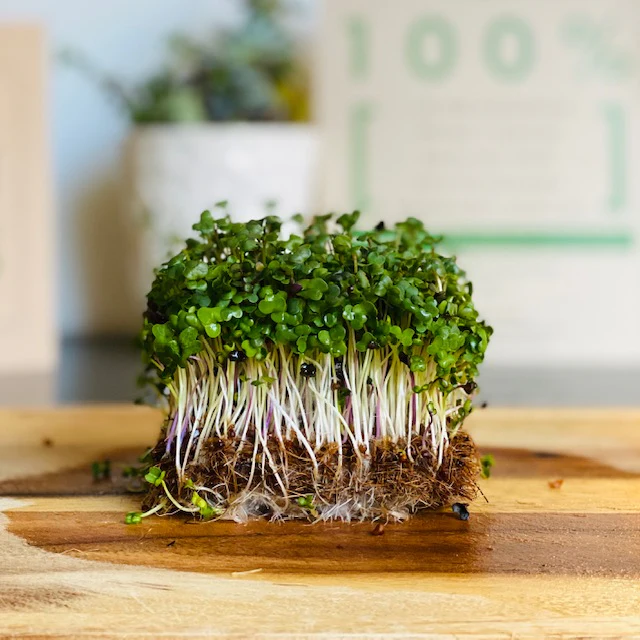
Spicy Salad Mix
Spicy salad mix microgreens offer a dynamic blend of flavors, typically combining the peppery heat of mustard and radish with the mild, earthy notes of kale and arugula. They are versatile in the kitchen, often used to elevate sandwiches, wraps, grain bowls, stir-fries, and fresh salads with both color and a spicy kick. This mix is rich in vitamins A, C, K, and E, as well as minerals such as calcium, potassium, and iron. Bioactive compounds like glucosinolates, carotenoids, and flavonoids provide antioxidant benefits, support detoxification, and may have anti-inflammatory and immune-enhancing effects.
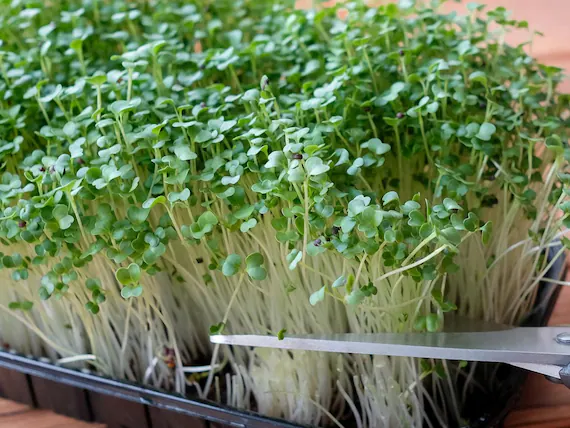
Kale
Kale microgreens have a mild, slightly earthy and peppery flavor that is more tender and less bitter than mature kale leaves. They are frequently used to enhance salads, smoothies, sandwiches, soups, and grain bowls, adding both flavor and vibrant green color. These microgreens are rich in vitamins A, C, K, and E, along with minerals such as calcium, potassium, and iron. Their bioactive compounds, including sulforaphane and flavonoids, provide strong antioxidant, anti-inflammatory, and potential cancer-protective benefits.
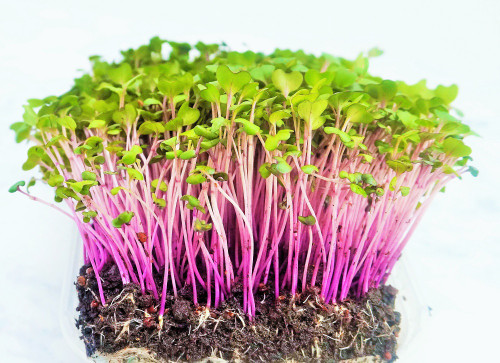
Red Cabbage
Red cabbage microgreens have a crisp texture and a slightly peppery, earthy, and mildly sweet flavor that is more concentrated than mature cabbage. They are often used to add color and a nutritional boost to salads, sandwiches, smoothies, grain bowls, and as a garnish for soups and main dishes. These microgreens are rich in vitamins C, K, and E, along with minerals like calcium, magnesium, and iron. Their bioactive compounds, including anthocyanins and glucosinolates, exhibit strong antioxidant, anti-inflammatory, and potential cancer-preventive effects.
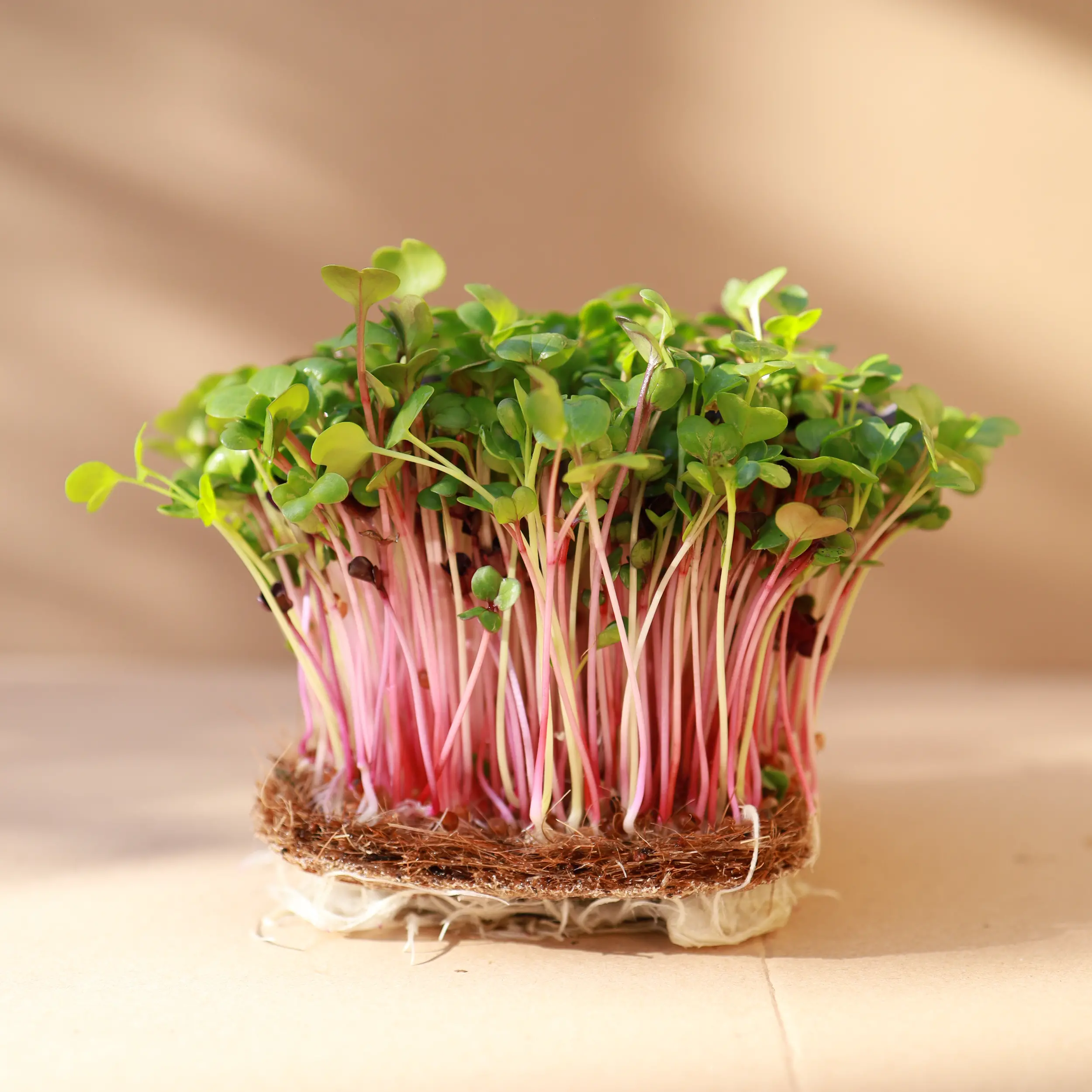
Radish
Radish microgreens have a bold, peppery, and slightly spicy flavor reminiscent of mature radishes but with a fresher, more delicate bite. They are often used to add a zesty kick to salads, sandwiches, tacos, sushi, and grain bowls, or as a colorful garnish. These microgreens are rich in vitamins A, C, E, and K, as well as minerals like calcium, magnesium, and phosphorus. Their bioactive compounds, including glucosinolates and anthocyanins, contribute to antioxidant activity, support detoxification pathways, and may promote cardiovascular and immune health.